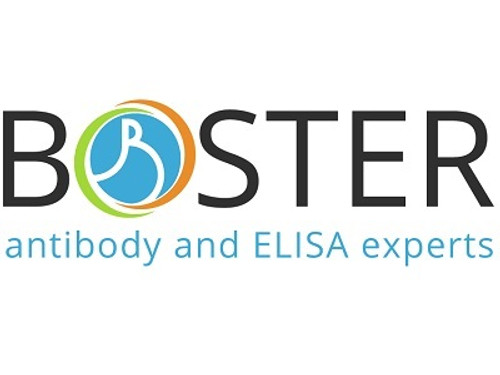Product Description
VEGF-B, a member of the VEGF family, is a potent growth and angiogenic cytokine. It promotes DNA synthesis in endothelial cells, regulates angiogenesis and Vascular permeability, and inhibits apoptosis in certain smooth muscle cells and neurons. VEGF-B is expressed in all tissues except the liver. It forms cell surfaced-associated disulfide linked homodimers and can form heterodimers with VEGF-A. There are two known isoforms, formed by alternative splicing, which have been designated VEGF-B167 and VEGF-B186. Both forms have identical amino-terminal sequences encoding a cysteine knot like structural motif, but differ in their carboxyl-terminal domains. Both VEGF-B isoforms signal only through the VEGFR1 receptor. Recombinant human VEGF-B is a 38.0 kDa disulfide-linked homodimeric protein consisting of two 167 amino acid polypeptide chains.
Biovision | 4642 | VEGF-B human recombinant DataSheet
Biomolecule/Target: VEGF-B
Synonyms: Vascular Endothelial Growth Factor-B, VEGFB
Alternates names: CD106, INCAM-100, MGC108734, MGC99561, VCAM, VCAM1, VCAM1B, VECAM1
Taglines: Involved in maintenance of newly formed blood vessels during pathological conditions
NCBI Gene ID #: 7412
NCBI Gene Symbol: VCAM1
Gene Source: Human
Accession #: P19320
Recombinant: Yes
Source: HEK 293 cells
Purity by SDS-PAGEs: 98%
Assay: SDS-PAGE
Purity: N/A
Assay #2: HPLC
Endotoxin Level: < 0.1 ng/g of protein (<1EU/g).
Activity (Specifications/test method): Determined by its ability to support the adhesion of human U937 cells. The expected ED50 for this effect is 0.8-1.0 g/ml.
Biological activity: Determined by its ability to support the adhesion of human U937 cells. The expected ED50 for this effect is 0.8-1.0 g/ml.
Results: N/A
Binding Capacity: N/A
Unit Definition: N/A
Molecular Weight: ~74.0 kDa
Concentration: N/A
Appearance: Lyophilized protein
Physical form description: Sterile filtered through a 0.2 micron filter. Lyophilized from 10 mM Sodium Phosphate, pH 7.0.
Reconstitution Instructions: Centrifuge the vial prior to opening. Reconstitute in water to a concentration of 0.1-1.0 mg/ml. Do not vortex. This solution can be stored at 2-8°C for up to 1 week. For extended storage, it is recommended to further dilute in a buffer containing a carrier protein (example 0.1% BSA) and store in working aliquots at -20°C to -80°C.
Amino acid sequence: FKIETTPESR YLAQIGDSVS LTCSTTGCES PFFSWRTQID SPLNGKVTNE GTTSTLTMNP VSFGNEHSYL CTATCESRKL EKGIQVEIYS FPKDPEIHLS GPLEAGKPIT VKCSVADVYP FDRLEIDLLK GDHLMKSQEF LEDADRKSLE TKSLEVTFTP VIEDIGKVLV CRAKLHIDEM DSVPTVRQAV KELQVYISPK NTVISVNPST KLQEGGSVTM TCSSEGLPAP EIFWSKKLDN GNLQHLSGNA TLTLIAMRME DSGIYVCEGV NLIGKNRKEV ELIVQEKPFT VEISPGPRIA AQIGDSVMLT CSVMGCESPS FSWRTQIDSP LSGKVRSEGT NSTLTLSPVS FENEHSYLCT VTCGHKKLEK GIQVELYSFP RDPEIEMSGG LVNGSSVTVS CKVPSVYPLD RLEIELLKGE TILENIEFLE DTDMKSLENK SLEMTFIPTI EDTGKALVCQ AKLHIDDMEF EPKQRQSTQT LYVNVAPRDT TVLVSPSSIL EEGSSVNMTC LSQGFPAPKI LWSRQLPNGE LQPLSENATL TLISTKMEDS GVYLCEGINQ AGRSRKEVEL IIQVTPKDIK LTAFPSESVK EGDTVIISCT CGNVPETWII LKKKAETGDT VLKSIDGAYT IRKAQLKDAG VYECESKNKV GSQLRSLTLD VQGRENNKDY FSP
 Euro
Euro
 USD
USD
 British Pound
British Pound
 NULL
NULL












